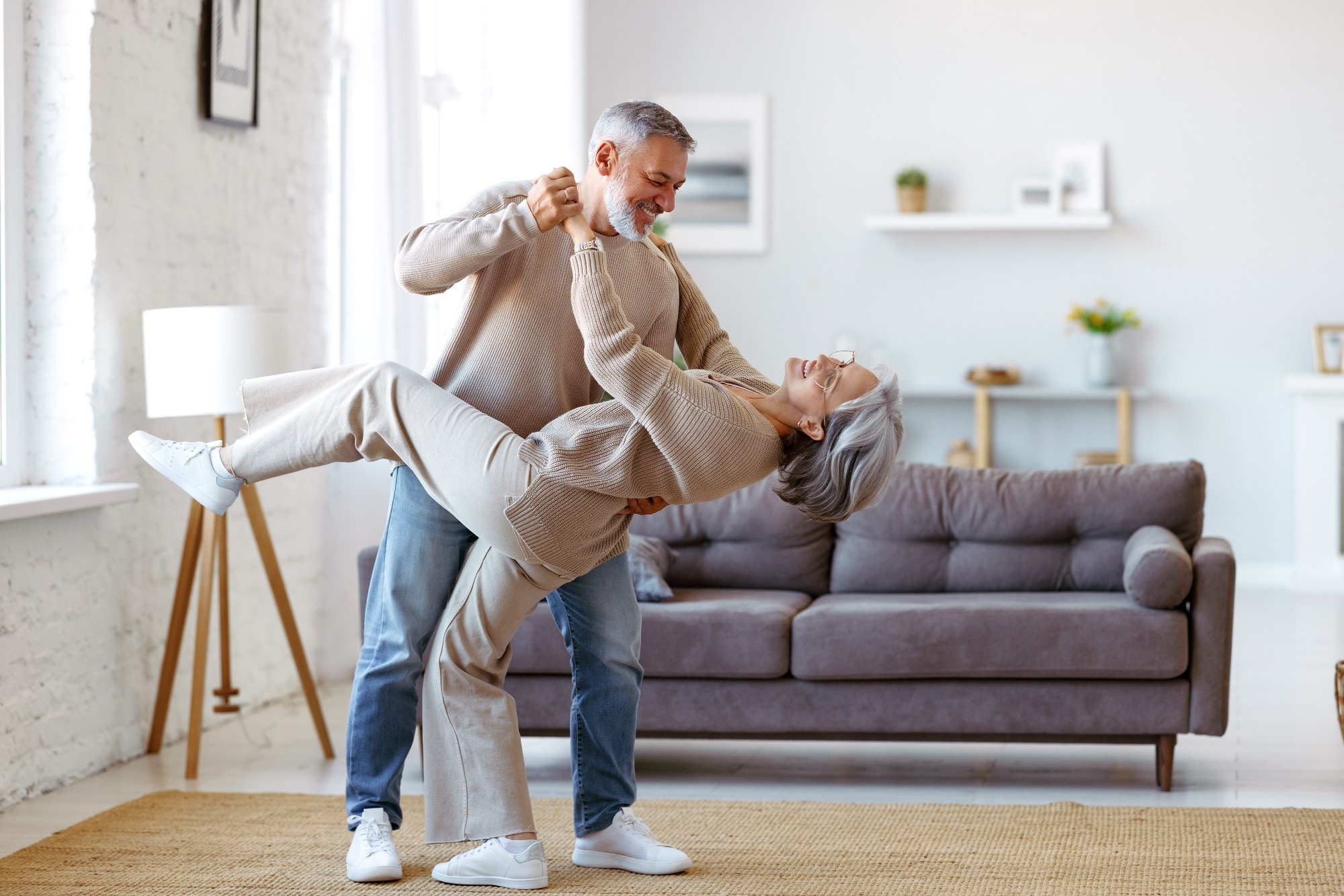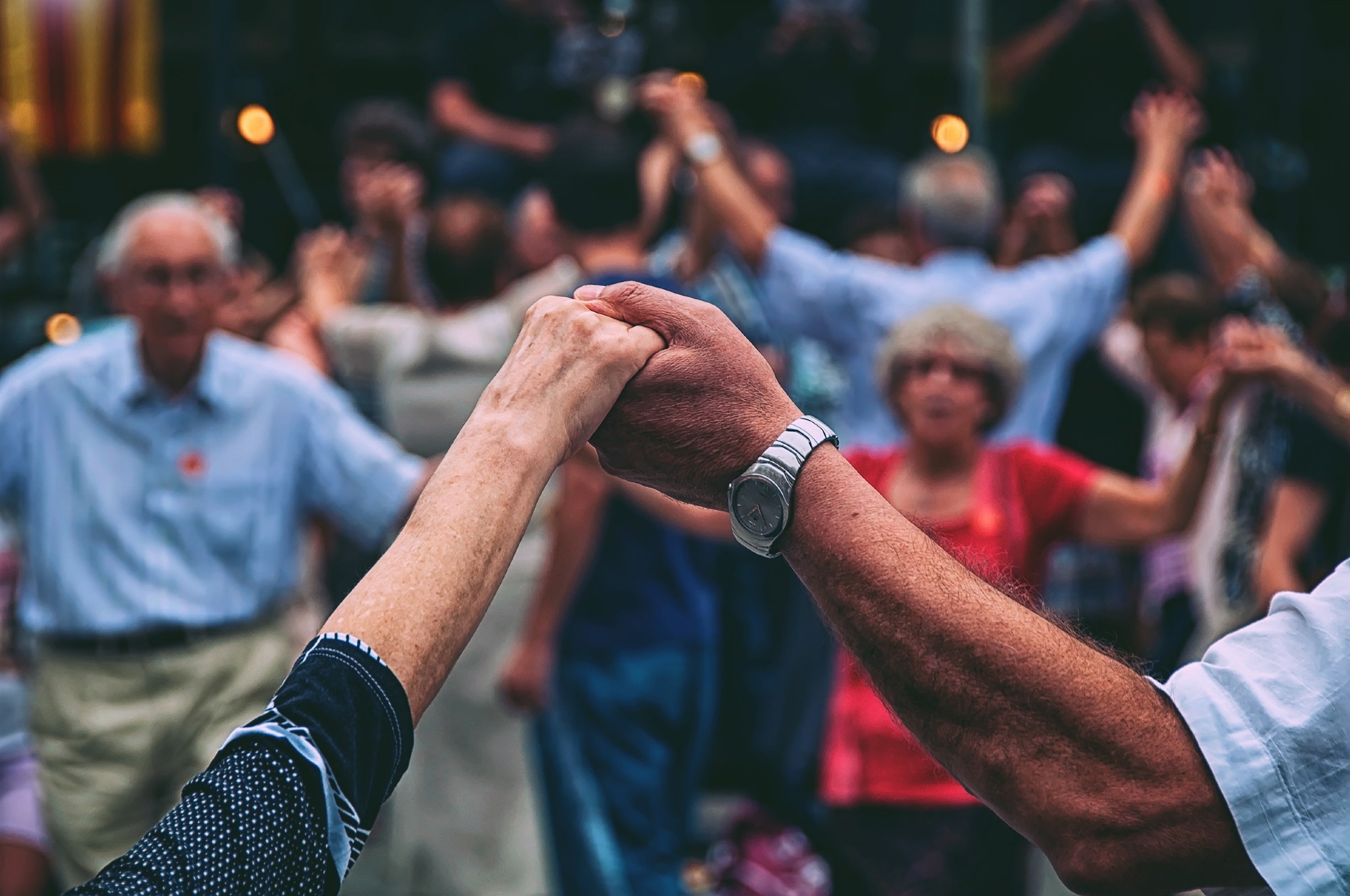Historical and cultural roots of dance
Biological benefits of dance
The science of movement and memory
Dance and emotion
Conclusion
References
Further reading
Humans have a special relationship with dance. It is not obvious why we do it, or why we enjoy it, but all around the world, humans dance. Over many years, scientists have attempted to leverage the benefits of dance into interventions for people with dementia.
Thus far, we understand that dance somewhat mitigates some of the effects of dementia, such as memory impairments.
Here, we explore the history of dance and how it impacts the mind. We delve into research that suggests how and why dance benefits us and how it can be useful in interventions for dementia.
 Image Credit: Evgeny Atamanenko/Shutterstock.com
Image Credit: Evgeny Atamanenko/Shutterstock.com
Historical and cultural roots of dance
Dancing is a phenomenon that is seen across cultures and throughout history. Evidence suggests that humans have been dancing since we were hunter-gatherers. Depictions of dancing have been found in paintings on rocks.
Historians believe that early humans used dance to communicate and that it was important in early societies for marking key events such as births, marriages, and deaths.
Today, cultures exist that are still considered to be primitive. Within these cultures, dance is a prominent feature of daily life. The Venezuelan Yanomamo people, for example, perform a special dance before going out hunting to ensure success.
Ancient Indian, Chinese, and Greek civilizations recorded anecdotes about the importance of dance in their cultures, where it was often used for religious purposes and even in theatre.
During the medieval period, dance continued to be a prevalent part of culture across the globe until the church began to consider it to be pagan and restricted it. During the Renaissance period, dance was revived and began being seen as an art form.
In the modern era, dance has developed into new, contemporary genres that cultures across the globe continue to enjoy as part of daily life, both partaking in and watching.
Biological benefits of dance
While it seems that all cultures throughout history have given importance to dance, it is uncertain why we started dancing. However, scientific research is helping to answer this question.
A paper published in 2006 suggested that the ability to dance was once connected with survival, as dancing was initially a way for early humans to bond and communicate. It is hypothesized that early humans who participated in dance may have had an evolutionary advantage.
It is easy to see how dancing to music brings joy and helps us bond with others. Science has confirmed that moving to music makes us feel good. Studies have also shown that we are born with the ability to dance and that doing so makes infants happy.
Further studies have suggested that performing coordinated movements, as we do when we dance, stimulates our brains’ reward centers, making us feel good when we dance.
The Science of Dancing: What Happens in Our Brains When We Dance?
The science of movement and memory
Studies have shown that dance significantly impacts the mind and body. It can reduce stress and boost levels of serotonin - the feel-good hormone. Also, dance can help the brain establish new neural connections, especially in the regions of the brain that are dedicated to long-term memory. Dance, therefore, is theorized to have a memory-boosting effect.
A study conducted by researchers at the University of Illinois at Chicago found that participants who took part in the BAILAMOS© program (a specially developed Latin ballroom dance program for older people) reported improvements in memory.
A 2019 review of studies looking into the impact of dance as a therapeutic treatment for Alzheimer’s disease found that most studies reported that dance could improve or slow down the worsening of the quality of life experienced by the patients.
A 2022 study found that exercise and music interventions are effective at mitigating the effects of dementia, such as memory impairments and cognitive decline.
 Image Credit: Madrugada Verde/Shutterstock.com
Image Credit: Madrugada Verde/Shutterstock.com
Dance and emotion
As touched on above, it is well-documented that dance can make people happy.
The findings of numerous studies have found that dance can provide physiological and psychological benefits to people who are both healthy or who have conditions, such as dementia.
A 2021 study found evidence that participating in dance improves both physical and mental wellbeing. It also provides relief from tension, aggression, and anxiety. It can also increase a person’s capacity for interaction, pleasure, fun, and impulsiveness.
Studies looking at the impact of dance on people living with dementia have found that dance can stimulate social interaction, improve mood, and reduce anxiety, agitation, and depressive symptoms.
Conclusion
Humans have a deep connection with dance. Since the dawn of time, it seems, we have danced. Doing so is well documented as having numerous physical and psychological benefits.
Studies have shown that dance can be effective at mitigating some of the negative effects of dementia, such as memory difficulties and low mood.
In the future, more studies are needed to gain a deeper understanding of our special relationship with dance so that effective interventions can be developed to improve the lives of people living with dementia.
Resources
- Ruiz-Muelle, A. and López-Rodríguez, M.M. (2019) ‘Dance for people with alzheimer’s disease: A systematic review’, Current Alzheimer Research, 16(10), pp. 919–933. doi:10.2174/1567205016666190725151614.
- Why do we like to dance--And move to the beat? [online]. The Scientific American. Available at: https://www.scientificamerican.com/article/experts-dance/ (Accessed November 2023)
- Wu, C.-C. et al. (2022) ‘Dance movement therapy for Neurodegenerative Diseases: A systematic review’, Frontiers in Aging Neuroscience, 14. doi:10.3389/fnagi.2022.975711.
- Zentner, M. and Eerola, T. (2010) ‘Rhythmic engagement with music in infancy’, Proceedings of the National Academy of Sciences, 107(13), pp. 5768–5773. doi:10.1073/pnas.1000121107.
Further reading
Last Updated: Nov 28, 2023